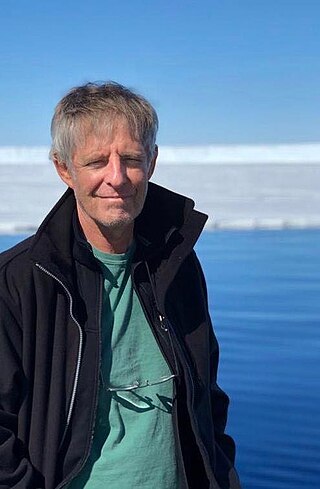
Sir Ernest Henry Shackleton was an Anglo-Irish Antarctic explorer who led three British expeditions to the Antarctic. He was one of the principal figures of the period known as the Heroic Age of Antarctic Exploration.

Maximilian Johannes Maria Hubert Reichsgraf von Spee was a naval officer of the German Kaiserliche Marine, who commanded the East Asia Squadron during World War I. Spee entered the navy in 1878 and served in a variety of roles and locations, including on a colonial gunboat in German West Africa in the 1880s, the East Africa Squadron in the late 1890s, and as commander of several warships in the main German fleet in the early 1900s. During his time in Germany in the late 1880s and early 1890s, he married his wife, Margareta, and had three children, his sons Heinrich and Otto and his daughter Huberta. By 1912, he had returned to the East Asia Squadron as its commander, and was promoted to the rank of Vizeadmiral the following year.

SMS Scharnhorst was an armored cruiser of the Imperial German Navy, built at the Blohm & Voss shipyard in Hamburg, Germany. She was the lead ship of her class, which included SMS Gneisenau. Scharnhorst and her sister were enlarged versions of the preceding Roon class; they were equipped with a greater number of main guns and were capable of a higher top speed. The ship was named after the Prussian military reformer General Gerhard von Scharnhorst and commissioned into service on 24 October 1907.

The Battle of the Falkland Islands was a First World War naval action between the British Royal Navy and Imperial German Navy on 8 December 1914 in the South Atlantic. The British, after their defeat at the Battle of Coronel on 1 November, sent a large force to track down and destroy the German cruiser squadron. The battle is commemorated every year on 8 December in the Falkland Islands as a public holiday.

The voyage of the James Caird was a journey of 1,300 kilometres (800 mi) from Elephant Island in the South Shetland Islands through the Southern Ocean to South Georgia, undertaken by Sir Ernest Shackleton and five companions to obtain rescue for the main body of the stranded Imperial Trans-Antarctic Expedition of 1914–1917. Many historians regard the voyage of the crew in a 22.5-foot (6.9 m) ship's boat through the "Furious Fifties" as the greatest small-boat journey ever completed.

The Imperial Trans-Antarctic Expedition of 1914–1917 is considered to be the last major expedition of the Heroic Age of Antarctic Exploration. Conceived by Sir Ernest Shackleton, the expedition was an attempt to make the first land crossing of the Antarctic continent. After Roald Amundsen's South Pole expedition in 1911, this crossing remained, in Shackleton's words, the "one great main object of Antarctic journeyings". Shackleton's expedition failed to accomplish this objective but became recognized instead as an epic feat of endurance.

Endurance was the three-masted barquentine in which Sir Ernest Shackleton and a crew of 27 men sailed for the Antarctic on the 1914–1917 Imperial Trans-Antarctic Expedition. The ship, originally named Polaris, was built at Framnæs shipyard and launched in 1912 from Sandefjord in Norway. When one of her commissioners, the Belgian Adrien de Gerlache, went bankrupt, the remaining one sold the ship for less than the shipyard had charged – but as Lars Christensen was the owner of Polaris, there was no hardship involved. The ship was bought by Shackleton in January 1914 for the expedition, which would be her first voyage. A year later, she became trapped in pack ice and finally sank in the Weddell Sea off Antarctica on 21 November 1915. All of the crew survived her sinking and were eventually rescued in 1916 after using the ship's boats to travel to Elephant Island and Shackleton, the ship's captain Frank Worsley, and four others made a voyage to seek help.

HMS Endurance was a Royal Navy ice patrol vessel that served from 1967 to 1991. She came to public notice when she was involved in the Falklands War of 1982. The final surrender of the war, in the South Sandwich Islands, took place aboard Endurance.

The Nautical Archaeology Society (NAS) is a charity registered in England and Wales and in Scotland and is a company limited by guarantee.

The Protection of Wrecks Act 1973 is an act of the Parliament of the United Kingdom which provides protection for designated shipwrecks.

Mensun Bound is a British maritime archaeologist born in Stanley, Falkland Islands. He is best known as director of exploration for two expeditions to the Weddell Sea which led to the rediscovery of the Endurance, in which Sir Ernest Shackleton and a crew of 27 men sailed for the Antarctic on the 1914–1917 Imperial Trans-Antarctic Expedition. The ship sank after being crushed by the ice on 21 November 1915. It was rediscovered by the Endurance22 expedition on 5 March 2022.

The National Maritime Museum, Cornwall is located in a harbourside building at Falmouth in Cornwall, England. The building was designed by architect M. J. Long, following an architectural design competition managed by RIBA Competitions.
David Louis Mearns, is an American-born United Kingdom based marine scientist and oceanographer, who specializes in deep water search and recovery operations, and the discovery of the location of historic shipwrecks.
The Battles of Coronel and Falkland Islands is a 1927 British docudrama film directed by Walter Summers. The film focuses on the naval warfare around the Battle of Coronel and Battle of the Falkland Islands during the First World War. It was the last in a successful series of documentary reconstructions of First World War battles by British Instructional Films made between 1921 and 1927. The film was produced at Cricklewood Studios and on location off Malta and the Isles of Scilly. The film is an entirely fictional recreation with a strong documentary feel.
Donald Alexander Lamont is a retired British diplomat who was Governor of the Falkland Islands and Commissioner for South Georgia and the South Sandwich Islands from 1999 to 2002.

Seabed Constructor is a multipurpose offshore vessel owned by Swire Seabed and contracted since December 2016 to British-owned hydrographic survey company Ocean Infinity, based in Houston, Texas, United States. Previously known as Olympic Athene and originally Olympic Boa, the ship was launched in 2013 and is flagged in Norway. The ship is designed to conduct geophysical and geotechnical surveys of the seabed, support the construction or demolition of underwater structures, conduct trenching and excavation operations, and serve as a ROV platform for the company's autonomous underwater vehicles and unmanned surface vehicles. The ship is 114 metres (374 ft) in length, with a 22 metres (72 ft) beam, a gross tonnage of 7,883, and deadweight tonnage of 6,480 metric tons. Its maximum speed is 14.1 knots.

Ocean Infinity is a marine robotics company based in Austin, Texas, United States and Southampton, United Kingdom and was founded in 2017. The company uses robots to obtain information from the ocean and seabed.
This page lists major events of 2019 in archaeology.
The Ship Beneath the Ice: The Discovery of Shackleton's Endurance is a 2022 book written by Falklands-born marine archaeologist Mensun Bound.













